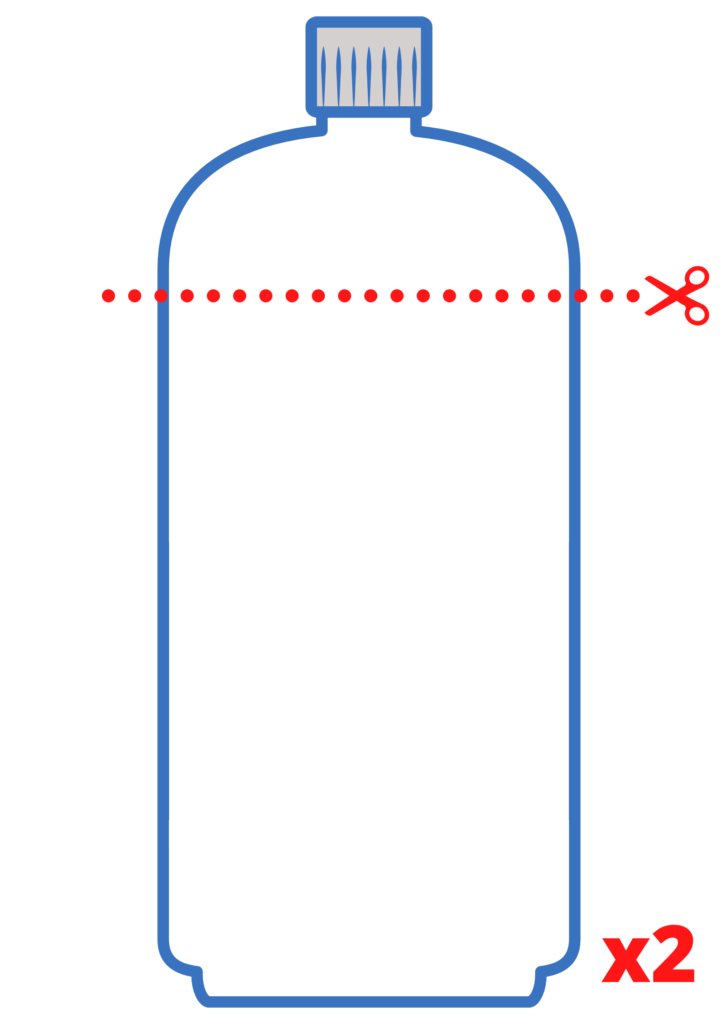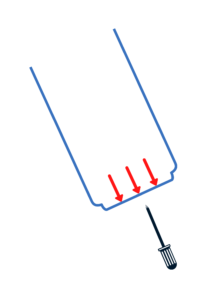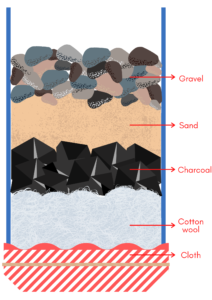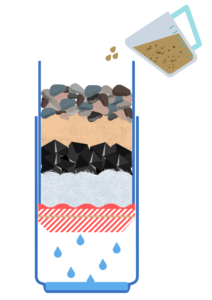Ever been on a hiking trip and ran out of fresh water to drink? What do you do? You turn to natural water from a spring or a river (if you are not in Malta). The water can look dirty due to the presence of soil, dirt, and other sediment in the water. In some areas, the water may look clean, but still there are millions of organisms in fresh water. Therefore, although the water might look clean that does not mean it is safe to drink. If you do not purify it before you drink it, you can get extremely sick from bacteria, viruses, or other forms of contamination. One can find different sources of water in the countryside, especially in more rural areas. These can be in the form of a river or a freshwater stream.

Water in rivers originates from mountains, and travels along valleys across the land. Although the water is clean from its origin, multiple microorganisms live in this water which can be harmful to us when we ingest them. The same goes for freshwater springs. A spring is a spot where water flows from an aquifer to the earth’s surface. Therefore, you will be getting the water directly from the source without it having to travel along a stream. However, the water might still contain microorganisms.
Boiling the water before you drink it is a good way of killing or inactivates viruses, bacteria, and other pathogens by denaturing their proteins using heat. Many organisms cannot survive when water reaches its boiling point of 100°C. However, boiling it does not necessarily make it clean and filtered.

So, here is a quick project which can help you solve this problem. Here is all you need to know to make your own filtration system that is small enough to carry with you in a backpack and use it when you are on the go. All we need is a few simple items found at home and a couple of items which can easily be purchased from local stores. This DIY water filter can be used to simply turn contaminated water into pure drinkable water.
1. Seek the help of an adult for this step.
2. Remove any labels from the bottles and make sure they are clean.
3. Use the scissors to cut the top part of both bottles.

4. Make a few holes at the bottom of one of the bottles using a screwdriver or something pointed. Do not make too many holes as it will affect the rate and the quality of the filtration process.

Create the filter
5. Start layering the filtering materials in the bottle on top of the holes at the bottom. Layer the materials in the following order and make sure that the layers are at least 5cm thick:

6. Cover the bottom part of the pierced bottle with a piece of cloth and secure it with rubber bands.
Using filtering device
7. Insert the filter bottle into the other bottle, bottom part first. This way the other bottle will collect the filtered water.
8. Get some dirty water such as some water with some soil and dirt in it and pour from the top of the device and allow it to pass through all the layers for it to be filtered.

Compare the filtered water with the dirty water. Can you notice any differences?
This filtering device works by filtering the water using several materials. The dirty water contains plenty of tiny organisms which are not visible without a microscope. Apart from this it will contain larger pieces of dirt, sand particles and some leaves and other organic matter. When we pour the water into the device, the gravel will trap the larger particles such as the soil and leaves thus eliminating the larger contaminants. You can prevent the larger pieces from being trapped within the gravel layer by adding another layer of cloth on top of the filtering device as well. If you are using gravel from your garden or small pebbles, make sure you clean them before using them in your filter.
When the water is successfully filtered through the gravel, it passes through the fine sand which is good at taking out muddy particles from the water. Sand traps further solid particles and reduces some of the bacteria. Make sure to use fine sand which is clean.
Charcoal will help remove any other chemicals which are harmful. Charcoal is made of carbon which helps remove contaminants and impurities from the water. It does this through the process of chemical absorption whereby pollutant molecules are trapped inside the carbon molecules. Make sure that you use activated charcoal and not the common charcoal we use for barbeques since that kind of charcoal has other chemicals added to it which might contaminate the water.
The last filter is the cotton wool. The cotton filter will trap any particles which might have escaped through the other filters. It can also reduce the bacteria content but not completely. Adding a layer of fabric to the bottom of the filter will trap any pieces of cotton wool which might have passed through the holes with the water during filtering.
Repeat filtration will make the filtration process more effective and the dirty water will significantly change in colour after each filtration.
Boiling the water after the filtration process will eliminate any bacteria and viruses that might have not been filtered completely. Remember that this water filtration device only does not make the dirty water 100% safe to drink. Therefore, you should always boil the water before drinking it.